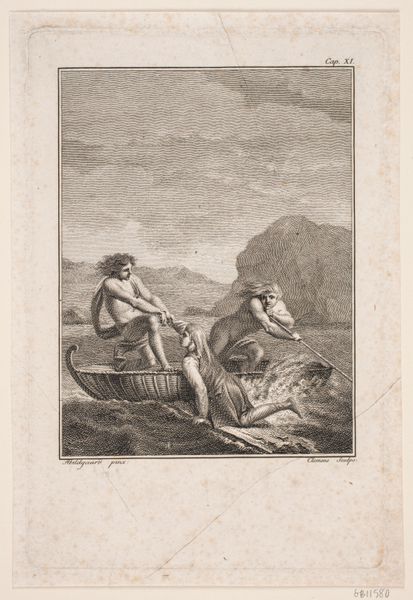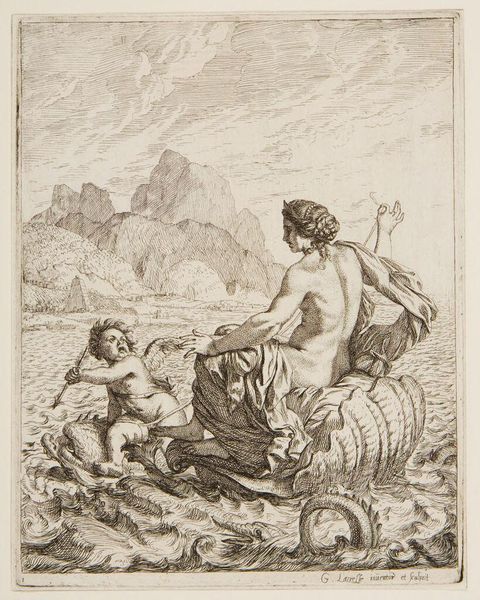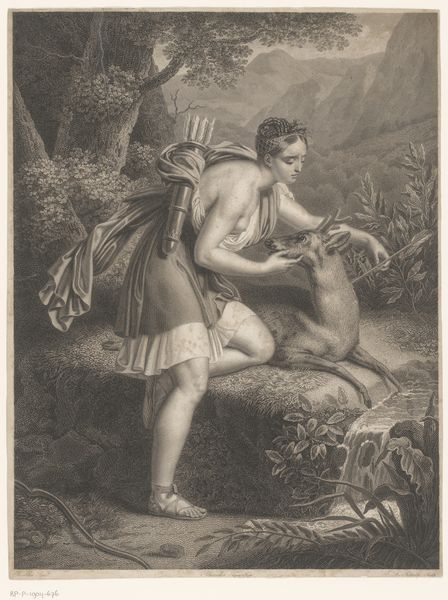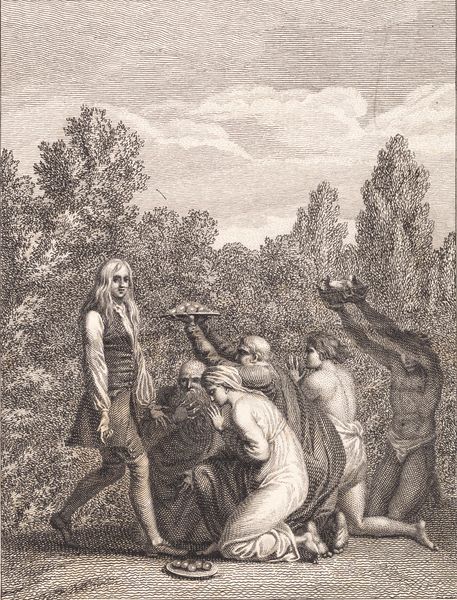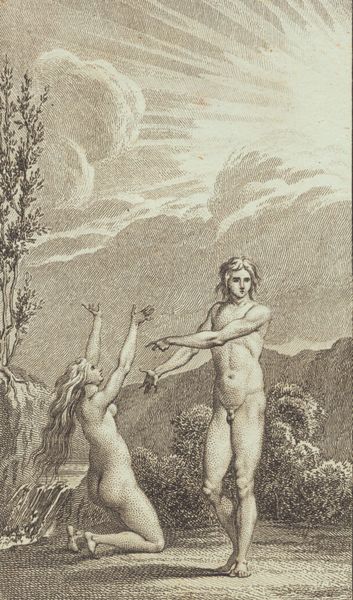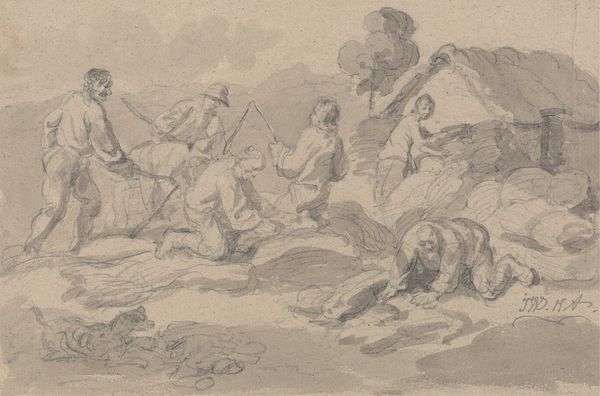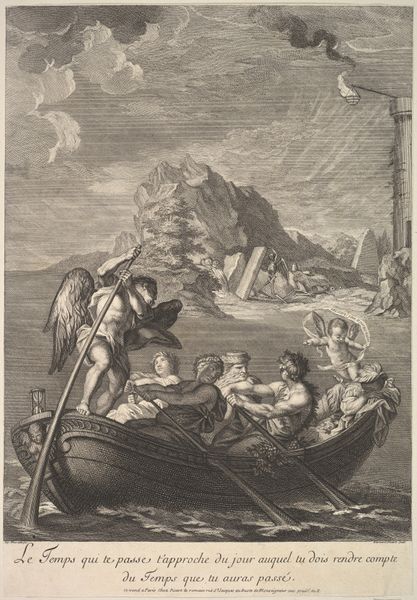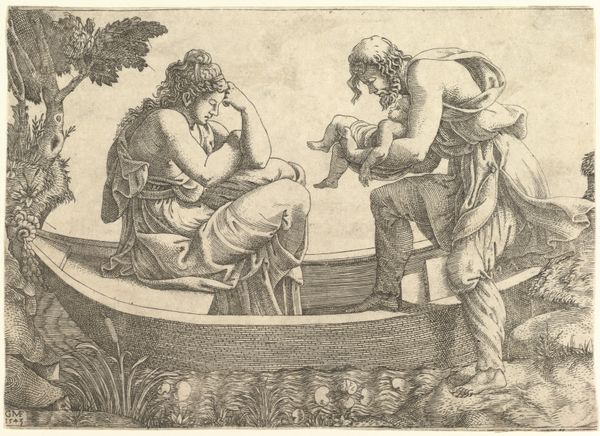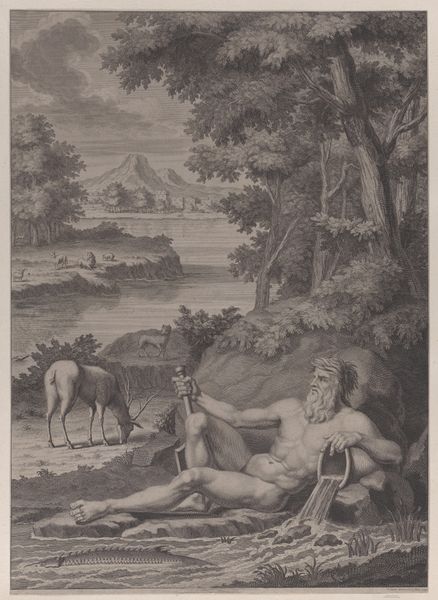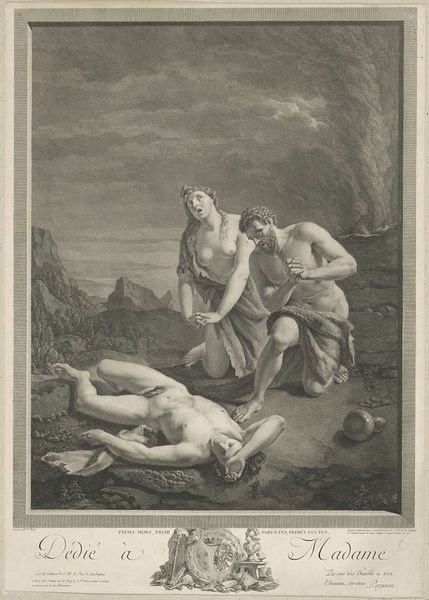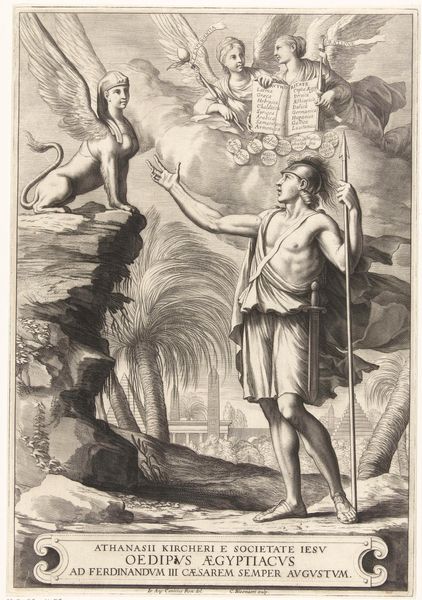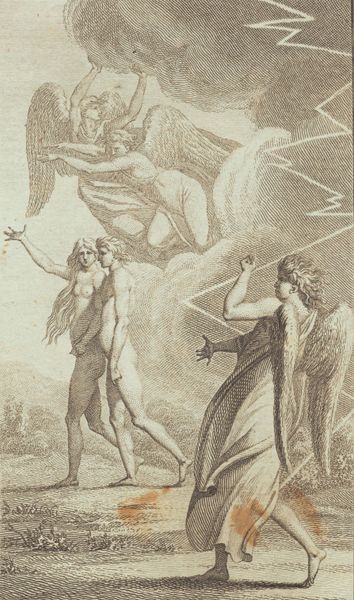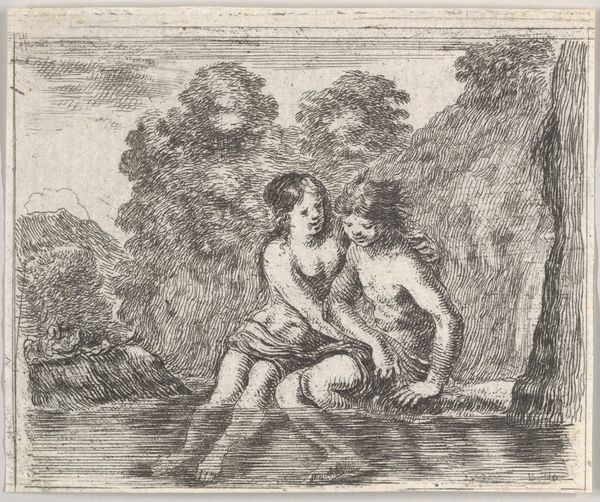
Den skibbrudne Niels Klim reddes af to Qvamiter i en vidiebaad 1786 - 1788
0:00
0:00
Dimensions: 185 mm (height) x 122 mm (width) (plademaal)
Editor: This etching by J.F. Clemens, dating from 1786 to 1788, is titled "Den skibbrudne Niels Klim reddes af to Qvamiter i en vidiebaad" – "The shipwrecked Niels Klim is rescued by two Quamites in a willow boat." There's a real sense of urgency in the scene, emphasized by the choppy water. What draws your eye to this print? Curator: Immediately, I notice the means of production. Etchings like this were a crucial way of disseminating narratives and ideas in the late 18th century. The accessibility of prints allowed stories – especially politically charged ones – to circulate amongst a broader audience than paintings typically reached. Were these images about craft, social messaging or simply aesthetics? That boundary became very blurry at this point in time. Editor: So, the *making* of it, the etching itself, is significant, beyond the image it portrays? Curator: Absolutely. Consider the labor involved in producing these detailed lines, the decisions about which scenes to depict, and the intended market for these images. Who was commissioning these prints? And what did their patronage imply? What do you observe about the *Willow boat* here, how has its design evolved? Are the tools the two figures are using manufactured to make navigating safer? Editor: That is a good point - looking closer, I see the weave of the willow in the boat and the very deliberate mark-making required for such texture. It does make you consider the effort gone into that detail. Also, good point to highlight that somebody at the time probably viewed the piece from an industrial viewpoint that i didn't see previously. Curator: Right, and Romanticism’s focus on landscape interacts interestingly with the very *material* conditions of printmaking, and thus dissemination of ideology at the time, don't you agree? Editor: Yes, I see that now. Thanks; this has given me much to consider when viewing prints from this period.
Comments
No comments
Be the first to comment and join the conversation on the ultimate creative platform.
